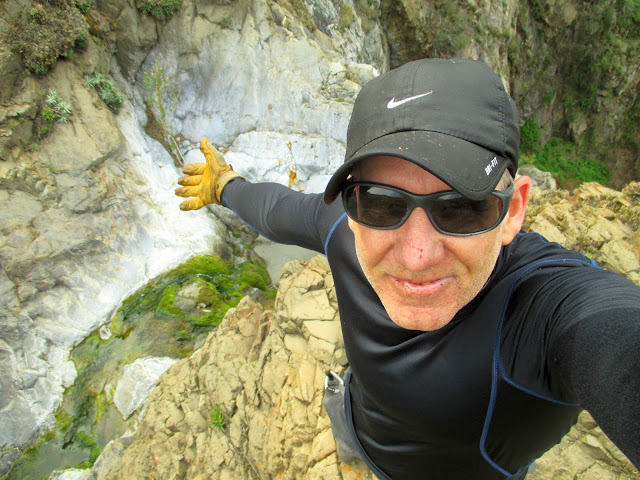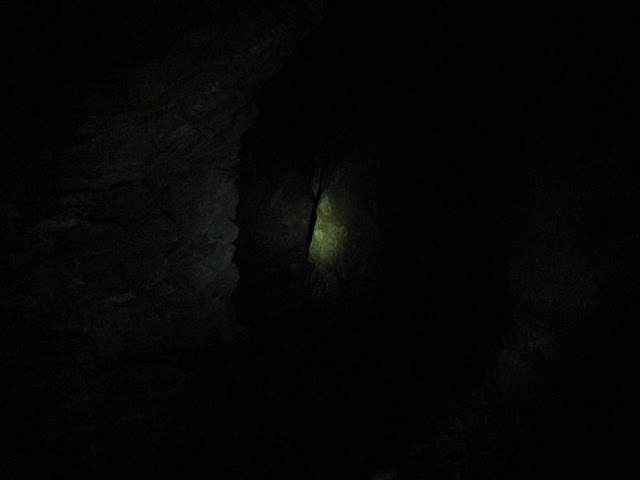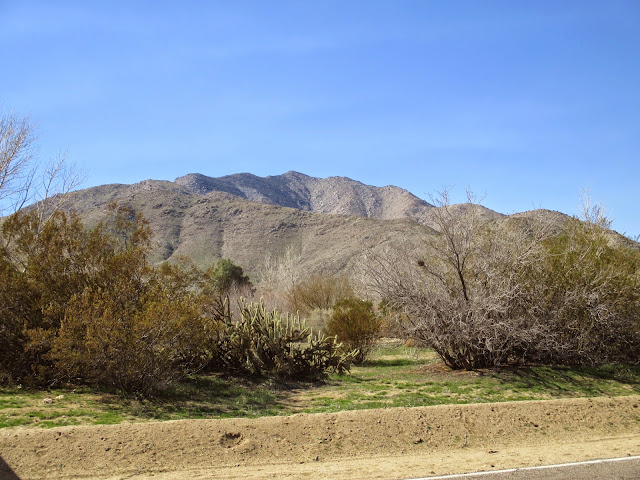Distance: 7.3 miles round trip on trail and cross country
Summit Elevation: 3342' (high point at trailhead)
Elevation Gain: 1331' (loss then gain)
Elevation Gain (in Empire State Buildings): 1.06
Round trip time: 7 hours
Recommended water: 124 oz.
Parking/Fees: Adventure Pass
Difficulty: Very Strenuous and Dangerous
Tanriverdi Falls (or Tanrierdi) is one of the crown jewels of the Santa Ana Mountains, and probably seen by only a handful of people each decade. There is no easy way to get there. I considered the long approach from the bottom of Hot Spring Canyon, coming from Chiquito Basin (heavy poison oak), Los Pinos ridge, and the north ridge of Old Sugarloaf, but decided descending from the top of the canyon was still the best. Note: canyoneering site ropewiki also refers to this as Salamander Canyon. Jerry Schad's Afoot and Afield in Orange County covers the hike from the bottom, a 10 hour round trip according to his write up. It also covers the hike to the second waterfall from the top, but not the wild mid-canyon section below it. Here is a part of his description:
Being in excellent physical condition, having considerable experience in cross country travel over rugged terrain, and possessing good judgement do not automaticaly guarantee that you'll be able to reach the falls and return without mishap. You must be cautious, patient, and determined too. Hazards include slippery rocks (some concealed by leaf litter), prickly vegetation, and literal forests of poison oak.I had hiked to the second waterfall in 2013 and scouted above it. The difference this time was the conviction to make it to the big falls. I would not recommend making an attempt without conviction. It is difficult and dangerous and for about an hour I was genuinely concerned that I would not make it out.
Long Canyon Road was open again and the first part was newly paved and smooth. I parked at the Falcon Campground and got ready for a fight. The pants, shirt, and socks I had on had been treated with Permethrin, a kill-ticks-on-contact chemical that you aren't supposed to spray on while wearing the clothes being treated. Serious chemical warfare. I added long gaiters, gloves, and a fleece for more brush protection. The easy part of the hike to the second falls was familiar and went quickly. I found 5 ticks on me getting to the second falls, the last one seemed to drop off on its own. The permethrin may have killed it. I decided to call the second falls "Gut Check Falls", because nothing comes easy after that. For the other falls, I used the names from the canyoneer trip report on Summitpost.org, matching up what I saw with their pictures and descriptions as well as I could. Most of the rocks in the canyon are worn as smooth as glass from the water so down climbing big falls was a non-starter. I followed a faint use trail on the right to bypass "Gut Check" and thought about descending back to the canyon, but I knew the "Single Track Falls" bypass would be required almost immediately so I stayed high on the wall trying to follow the occasional animal trail. This was very difficult as the brush got thicker. I traversed across a side canyon looking for a way to descend. I found a way to the bottom of the side canyon, then fought through hellish brush to get back to Hot Spring Canyon. What made the bushwhacking so bad was not just the native growth, but the years of run off that filled the side canyon. Small trees, boulders, and debris mixed with the native plants to create an unholy jumble. I used the machete to hack some areas, but overall, it was a negative, getting caught on things as I tried to pass under. The tick problem went away, probably because I was in such dense brush that the deer were not stupid enough to wade through. No deer, no ticks.

On the way back, I spotted this fixed rope on a boulder below Single Track Falls. I was not sure I could trust it, and not sure I could make it past the falls even if I made it to the boulder, so I continued up the canyon wall on the left.
Once I was back in the right canyon, I started running into large patches of poison oak, a lot of it I could not avoid. Most of the other large waterfalls I encountered had some kind of bypass on the left or right, but for some I had to force my way up the canyon wall, often with class 3 scrambling, and back down. I was now moving at a crawl, about 1/2 mile per hour. The route finding was very difficult. For each bypass I found, I thought about turning back, wondering if I could reverse my path on the return. But I kept going, hoping each new waterfall would be Tanriverdi Falls. Finally, the canyon started to clear out a little and I could sense Tanriverdi was near. It was quite a thrill to reach it, even though only a trickle was flowing over. I had to find one final bypass to get around a 20' waterfall I dubbed "Preview Falls" just before the big 160' drop. There is another drop on the bottom tier. I found the webbing left behind by the previous canyoneers around a boulder, used to make the huge rappel. I took photos, ate something, then started thinking about getting out. It had taken me 3.5 hours to reach the big falls, and I expected it to take at least as long to get out.
I was not happy with the bushwhacking I had to do coming down, so I decided to stay in the canyon as much as possible on the way back. This meant dealing with even more poison oak, which was not growing on the walls. I am pretty sure I was slapped in the face by some poison oak vines on the way out. I scrubbed my face with cold water and Technu as soon as I got home, but time will tell if I have to cope with that. I was pleased that I found the bypasses on the way back that I had figured out on the way down. Of course, I eventually ran into some waterfalls where I had to fight up the canyon walls again, but in a decidedly different place than before. I climbed as high as I needed to feel safe before traversing across the side canyons and continued following any faint animal trail I could find. I checked my GPS to see if I had passed Gut Check Falls and saw that it was about 0.2 miles upstream.
Here is where things went sideways. At my location on the wall, the chaparral was nearly impassable. I looked for a lower animal trail and would struggle down to it only to find it quickly ended in another impassable snarl. Then, I fought up again only to be blocked. This happened several times before I got concerned. I didn't seem to have any way forward. With my energy draining quickly, I decided my only option was to get back to the canyon floor and hope I didn't cliff out. The brush was worse than the hellish mix I faced on the way down. The machete would not have been effective against the small trees I faced. I could not take useful steps so I essentially somersaulted over the top crashing into wherever I landed. The wall was steep so I had to be careful to not tumble over the edge. This was effective at getting out of the worst of it and as I neared the edge, I was lucky to find a way to down climb to the canyon floor. I thought I would have to face at least one more bypass but soon it became clear that I had emerged above Gut Check Falls and would have an easy climb out. I was quite a mess at this point, bleeding in at least 7 places. I felt bruised on all limbs and had multiple hits from yucca and random thorns. As I was almost out, I met three hikers heading down who asked me if they were almost to the waterfall. I told them there were at least 9 waterfalls, but they should stop at the second. I hope they took that advice.
This was the toughest route finding I have ever faced, the nastiest bushwhacking, and probably the most dangerous hike I've ever done. Was it worth it? Maybe, but only because I got out alive. Looking back, there are two things I would have done differently. One, I would get back in the canyon right after Single Track Falls. Two, I made a mistake staying on the wall too long on the way back. Eliminating those two mistakes would have made my life much easier. Fair warning, I still can't recommend this hike, unless you crave danger with a side of masochism. It is probably easier to rappel down many of the falls than bypass them, so come get it, canyoneers. I am done.
Update 2/26/2015: Despite my precautions, I am nursing several poison oak rashes. Both wrists where skin was exposed between my gloves and shirt sleeve, a small section on my lower back, one spot on my neck and my right ear.
See Also:
Salamander Canyon (ropewiki)
Woman Dies in Fall from Remote OC Waterfall
Montclair woman identified as rock climber fell to her death























































